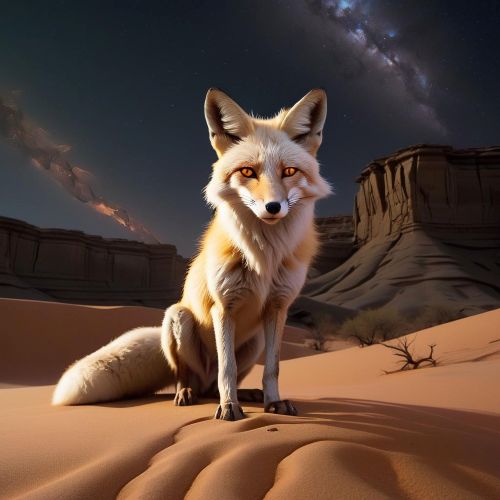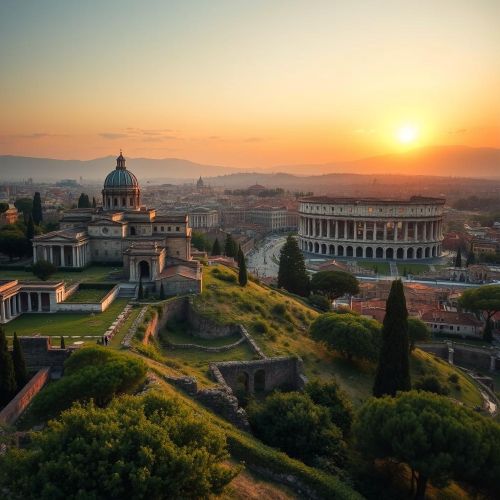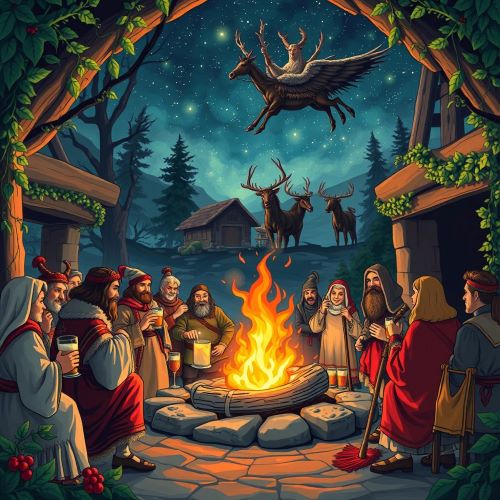Odin’s Blot : The Viking Party
At a glance
| Description | |
|---|---|
| Location | Scandinavia |
| Country | Denmark, Finland, Sweden |
| Dedicated To | Odin |
| Duration | 3 days |
| Time of Year | January |
Introduction
In the heart of Norse tradition lies a powerful ritual known as Odin’s Blót—a sacred offering to the Allfather. More than a simple sacrifice, this ceremony was a way for the Norse people to connect with their gods, especially Odin, who ruled over wisdom, battle, and the dead. These rituals weren’t just religious acts; they were deeply woven into everyday life, especially for warriors and leaders who sought Odin’s guidance and protection.
Odin’s Blót stood at the crossroads of belief, power, and survival. It served not only as a plea for divine favor but also as a reflection of the values and priorities of Norse society. Even today, the echoes of these ancient rites continue to fascinate people around the world.
Connection with Mythology
Odin’s importance in Norse mythology is undeniable. As the relentless seeker of knowledge who gave up his eye for wisdom and hung from the World Tree to master the runes, his identity is deeply rooted in sacrifice. It’s no wonder the rituals honoring him emphasized giving something valuable in return for his favor.
These offerings weren’t limited to prayer. They reflected the reciprocal nature of Norse belief—if Odin made great sacrifices for humanity, then humans must be willing to do the same for his support. Whether warriors sought strength in battle or guidance in leadership, Blót rituals were seen as a necessary spiritual transaction with a god who valued courage, loyalty, and understanding of fate.
Main Activities
The Blót wasn’t just a spiritual gesture; it was a grand event involving the whole community. Everything from the location to the order of activities carried deep symbolic meaning.
-
Sacrifices: The offerings varied depending on the occasion and the need. Common animals included horses, pigs, and goats. In dire or significant moments, human lives—often prisoners of war—were offered. These acts, though extreme by modern standards, were rooted in the belief that great gains required great offerings.
-
Sacred Spaces: Temples (known as Hofs) or natural sites like groves and springs were preferred venues. The surroundings added a sense of divine presence, with nature believed to hold powerful connections to the gods.
-
Blood Rituals: Once the sacrifice was made, the blood was collected and used to bless the altar, sacred objects, and even the people present. This act was both symbolic and spiritual—linking the physical world with the divine and asking for Odin’s watchful presence.
-
Feasts and Toasts: After the rituals, a communal feast brought everyone together. The meat from the sacrifice was shared, and drinking horns were raised to toast Odin and other gods. These toasts weren’t just celebratory—they were declarations of allegiance and hope for future blessings.
-
Chants and Oaths: Songs, poetry, and spoken vows were another vital part. As the god of poetry, Odin was honored through skaldic verses and chants. Warriors often took this opportunity to swear oaths—binding promises made before the gods.
-
Seasonal Observances: These rituals weren’t random. They often marked key times of the year like winter nights, Yule, and the start of summer. The biggest gatherings happened every nine years, especially at revered sites like Uppsala.
Importance in Cultural History
Odin’s Blót wasn’t just a personal act of devotion—it was political, social, and spiritual all at once.
-
Legitimizing Power: For kings and chieftains, leading a Blót wasn’t optional. It was a visible act of divine endorsement. Leaders who neglected or disrespected these traditions risked losing their authority—or even their throne.
-
Strengthening Communities: These rituals created unity. By gathering for a shared spiritual purpose, communities built trust, reinforced common values, and celebrated their heritage together.
-
Preserving Norse Identity: Blót encapsulated key themes in Norse belief: sacrifice, fate (known as Wyrd), and the importance of honoring both gods and ancestors. It served as a way to align with the cosmic forces that governed life and death.
-
Suppression and Survival: When Christianity spread through Scandinavia, these rites were branded as pagan and banned. Still, elements of Blót survived through folklore and were eventually revived by those seeking to reconnect with ancient traditions.
-
Historical Evidence: Accounts from sagas, poems, and even early Christian chroniclers give us insight into how these ceremonies were conducted. Archaeological finds—like temple remnants and ceremonial tools—further confirm the depth and structure of these events.
Need a place to stay? Book your hotel room now!
International Appeal
Odin’s Blót might have started in Northern Europe, but its legacy has crossed continents.
-
Modern Pagan Practices: Today, groups within the Ásatrú and Heathen communities have brought Blót back into practice—though in more symbolic forms. Offerings now typically include food, drink, or crafted items rather than blood sacrifices, and the focus is on honoring tradition and strengthening community.
-
Pop Culture Recognition: Thanks to books, movies, and television shows, Norse mythology has found new life in popular culture. Odin’s Blót is often portrayed in dramatic scenes in series like Vikings or The Last Kingdom, or hinted at in fantasy works inspired by ancient traditions.
-
Art and Symbolism: Runes, ravens, and Valknut symbols—associated with Odin—have become iconic. Tattoos, jewelry, and artwork keep these symbols alive, often as expressions of identity, spirituality, or fascination with the Viking age.
-
Global Communities: Interest in Norse culture has grown well beyond Scandinavia. From the U.S. to Australia, people gather to study, celebrate, and sometimes reenact ancient rituals—keeping the spirit of Odin’s Blót alive in new ways.
Source
Davidson, H.R. Ellis. Gods and Myths of Northern Europe. Penguin Books, 1964.
Price, Neil. The Viking Way: Magic and Mind in Late Iron Age Scandinavia. Oxbow Books, 2019.
Gaiman, Neil. Norse Mythology. W.W. Norton & Company, 2017.
Simek, Rudolf. Dictionary of Northern Mythology. Boydell & Brewer, 1993.
Contributors to Wikimedia projects. (2004). Blót – Wikipedia. https://en.wikipedia.org/wiki/Bl%C3%B3t
The Viking blót sacrifices – National Museum of Denmark. (n.d.). https://en.natmus.dk/historical-knowledge/denmark/prehistoric-period-until-1050-ad/the-viking-age/religion-magic-death-and-rituals/the-viking-blot-sacrifices/
Cadence. (2024). The Influence of Norse vs. Greek Mythology: A Comparative Study. https://mylifetea.com/blogs/the-gods/the-influence-of-norse-vs-greek-mythology-a-comparative-study
Andreas Kornevall. (2021). Norse Ceremony – The Blot – Andreas Kornevall. https://www.kornevall.com/post/norse-ceremonial-architecture-blot
Frequently Asked Questions
Lorem ipsum dolor sit amet, consectetur adipiscing?
Lorem ipsum dolor sit amet, consectetur adipiscing elit. Praesent convallis vestibulum justo, ac tincidunt nunc vehicula quis. Nullam id dolor quis orci malesuada feugiat. Curabitur aliquet libero at urna ullamcorper, ac ultricies nulla dapibus.
Lorem ipsum dolor sit amet, consectetur adipiscing?
Lorem ipsum dolor sit amet, consectetur adipiscing elit. Praesent convallis vestibulum justo, ac tincidunt nunc vehicula quis. Nullam id dolor quis orci malesuada feugiat. Curabitur aliquet libero at urna ullamcorper, ac ultricies nulla dapibus.
Lorem ipsum dolor sit amet, consectetur adipiscing?
Lorem ipsum dolor sit amet, consectetur adipiscing elit. Praesent convallis vestibulum justo, ac tincidunt nunc vehicula quis. Nullam id dolor quis orci malesuada feugiat. Curabitur aliquet libero at urna ullamcorper, ac ultricies nulla dapibus.
Lorem ipsum dolor sit amet, consectetur adipiscing?
Lorem ipsum dolor sit amet, consectetur adipiscing elit. Praesent convallis vestibulum justo, ac tincidunt nunc vehicula quis. Nullam id dolor quis orci malesuada feugiat. Curabitur aliquet libero at urna ullamcorper, ac ultricies nulla dapibus.
Lorem ipsum dolor sit amet, consectetur adipiscing?
Lorem ipsum dolor sit amet, consectetur adipiscing elit. Praesent convallis vestibulum justo, ac tincidunt nunc vehicula quis. Nullam id dolor quis orci malesuada feugiat. Curabitur aliquet libero at urna ullamcorper, ac ultricies nulla dapibus.





